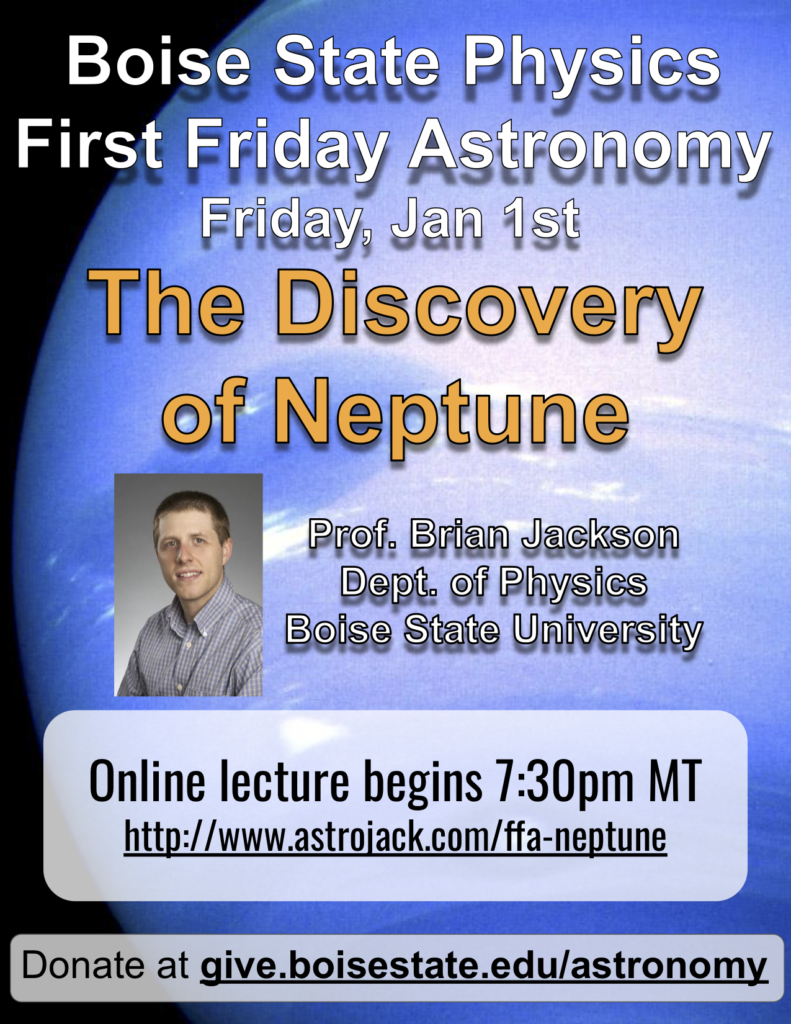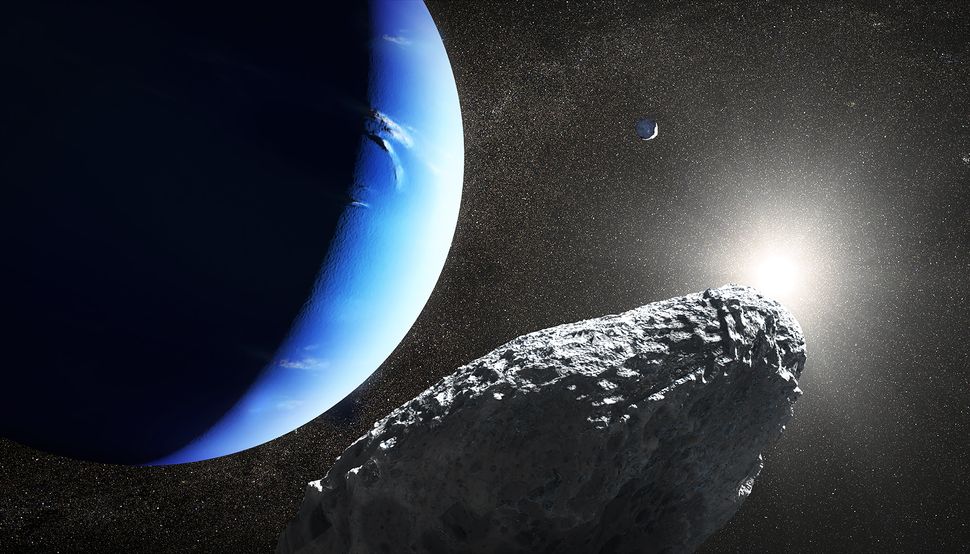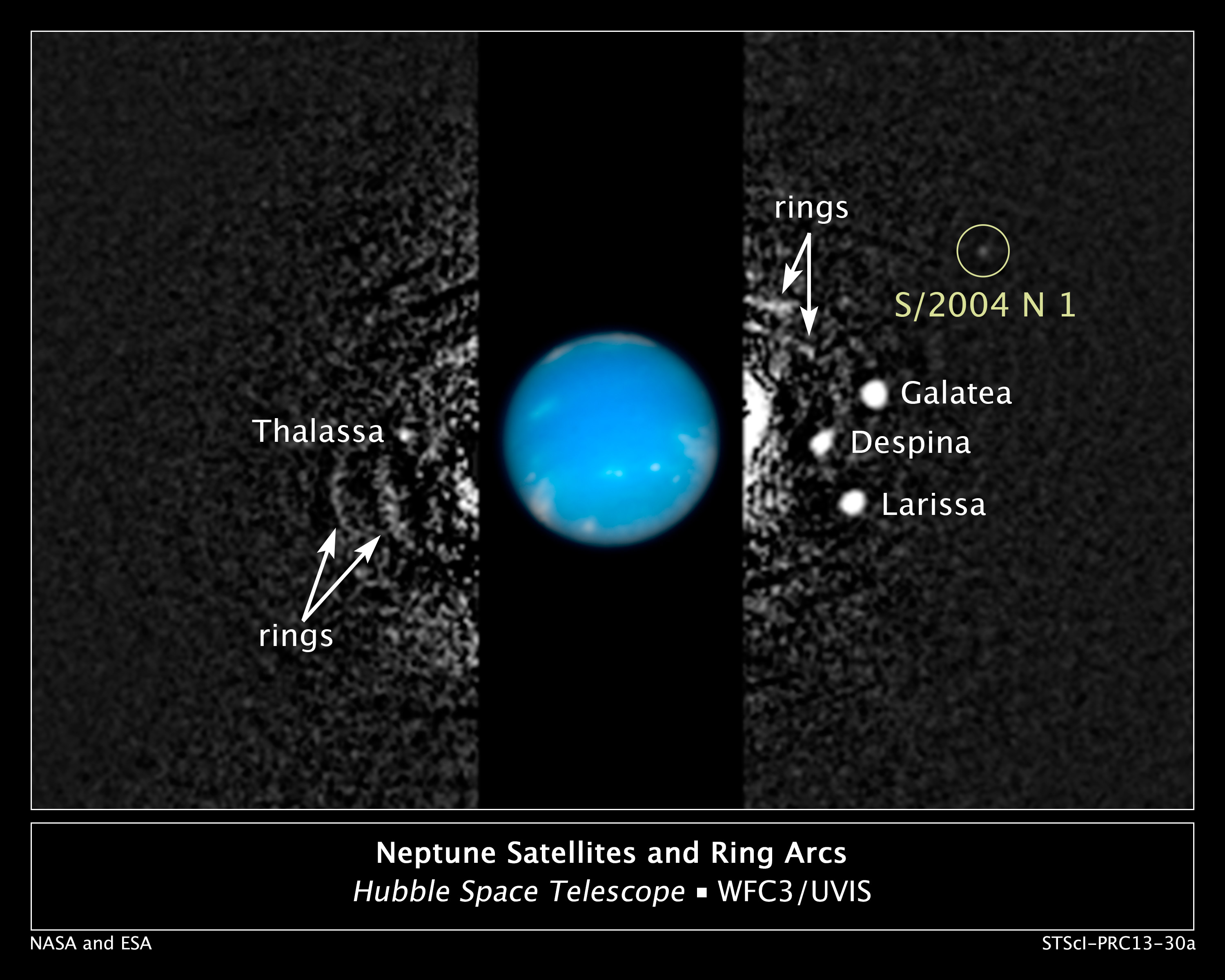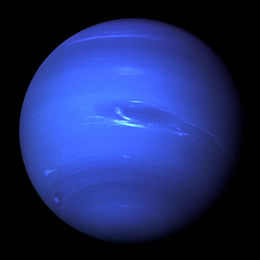



In our research group meeting this week, we discussed the recent discovery of a new moon orbiting Neptune, named after Poseidon’s chimerical winged pega-fish Hippocamp.
Hippocamp is about 12 km across, so small and dim that it wasn’t seen when Voyager 2 flew past in 1989, back when the B-52s were heading down the Atlanta Highway. In fact, Showalter and colleagues had to use high-precision Hubble observations and a new data-processing approach to spot the little moon circling Neptune just interior to another moon Proteus.

Hippocamp orbits so close to Proteus that Showalter and colleagues suggest it may have originated from this larger moon in a massive collision. That same collision may have created Proteus’ enormous impact basin Pharos, and Showalter suggests that collision would have liberated debris, some of which later accreted interior to Proteus’ orbit to form Hippocamp.
If Hippocamp really did form from such an impact, it has probably experienced numerous disruptive collisions itself over its billion year history. Based on studies of the frequency of large cometary collisions out near Neptune’s orbit, Showalter and colleagues estimate that Hippocamp may have been disrupted and re-accreted about 9 times in the last 4 billion years.
Having risen from its own ashes so many times, Hippocamp may be less like a mythical sea-horse and more like a cynthian phoenix.

The Kepler/K2 Mission has revolutionized astronomy, having more than decupled the number of known and suspected exoplanets in just the last few years. Although we can extrapolate things we’ve learned from these distant planets to infer things about our own solar system, data from the mission have not impacted directly on our understanding of the solar system because the mission has not observed solar system objects, until now. For a recent paper, Jason Rowe and colleagues collected K2 observations of Neptune to look for the signatures of global oscillations in the planet.
What does that mean? All planets and stars exhibit intrinsic oscillations as seismic waves permeate their interiors – essentially they are ringing like giant celestial bells. On the Earth, detailed studies of these seismic waves have taught us loads about Earth’s interior, and the soon-to-launch Insight Mission will do much the same for Mars. We also study the Sun’s interior this way because we can watch as waves that originate deep within the Sun bounce around on the surface. For the Sun, these waves cause tiny oscillations in brightness every few minutes.
In the last decades, a lot of work has gone into looking for such oscillations for in gas and ice giants in our solar system, but aside from very cool indirect signatures in the rings of Saturn, no one has clearly detected global oscillations in the giant planets. Using the Kepler spacecraft, Rowe and colleagues set out to detect global oscillations by watching Neptune for 80 days. Unfortunately, in spite of a tremendous effort, they did not detect any clear oscillations from Neptune.
But amazingly, they were able to detect variations in brightness due to the Sun’s global oscillations. This is a little like seeing someone signaling with a flashlight by looking at a mirror in which the light is being reflected, only with the flashlight and mirror 4 billion kilometers apart.
The movie below shows the Kepler observations of Neptune as the planet meandered across the field of view. Keep in mind that the solar oscillations are VERY small, and the oscillations in brightness apparent in the movie are due to Neptune’s motion in the field, NOT due to the Sun. To see those oscillations, you’d need to be a computer.